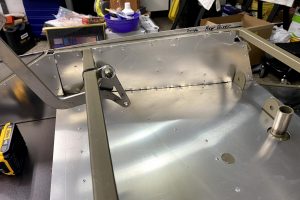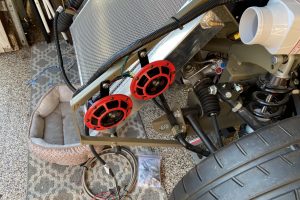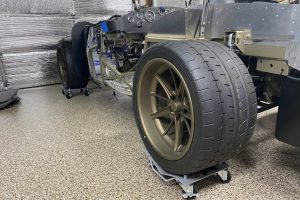The completion of the engine bay tasks is a demanding endeavor that must be accomplished prior to painting. Among these tasks is the installation of the heater valve and hoses. As a temporary measure to initiate the engine’s operation, a bypass hose was connected between the Coyote heads. This configuration is commonly employed by builders who forego the use of a heater, effectively closing the water circuit. At the bottom of the photo, you can observe the implementation of the GATES 3732 5/8″ heater hose connecting the two water tower ports.

To configure the heater, the hoses must be connected from the engine to the HVAC unit. This entails extending the length of the hoses and utilizing various angle connectors. Additionally, I incorporated hose wrap for a more aesthetically pleasing appearance.

Here is a breakdown of the components needed to assemble this setup. It’s quite astonishing that it costs around $185.
- (1) 1/2″-3/4″(13-19mm)304 Hose Clamps Stainless Steel Adjustable Worm Gear Hose Clamps $10
- (1) Gates 28471 90 Degree Molded Heater Hose $13
- (3) Gates 28466 90 Degree Molded Heater Hose $12
- (2) Dorman Help! 47062 Heater Hose Elbow 5/8″ $7
- (1) Hose Barb Fitting 3 PCS, 5/8 Inch to 5/8 Inch $9
- (2) Gates 28504 Quick-Lok Heater Hose Connector $27
- (2) Dorman 626-001 Engine Heater Core Bypass Kit Universal Fit $19
- (1) 1 inch PET Expandable Braided Sleeving $12
Installing the Thermotion valve on the firewall is my final step in securing all components in the engine bay. Use three 3/16″ pop rivets to securely mount the valve. Next, carefully align the hoses, trim them to the appropriate length, and wrap them with protective sleeving. Finally, secure the hoses in place with clamps. Although the space may be limited, everything should fit snugly and function properly once the installation is complete.




I am extremely satisfied with the final result of this project. It was quite a challenge to maximize the utilization of every available space in the engine bay. Currently, my focus is on installing the blower on the HVAC system, although I must admit that it is proving to be a bit difficult due to the confined space. I often find myself dropping screws in the process, but I am determined to overcome this obstacle.
Stay posted!
Discover more from Cobra Dreams
Subscribe to get the latest posts sent to your email.







